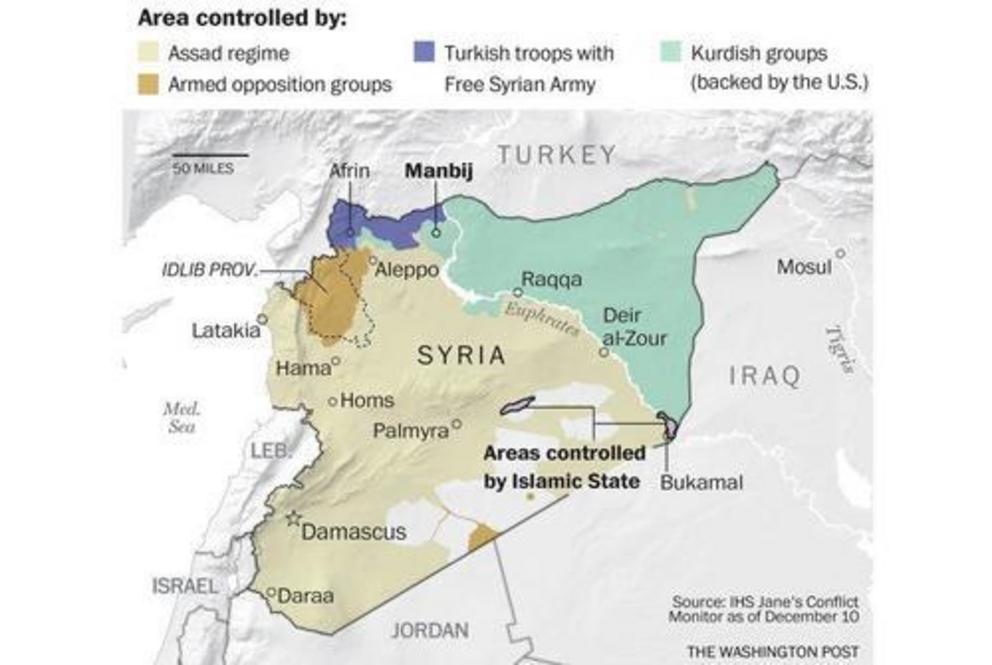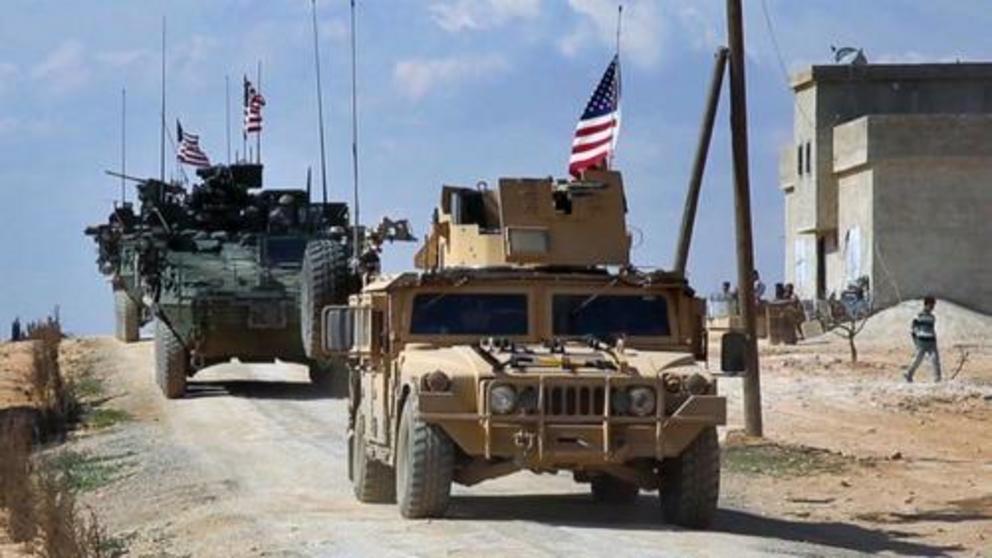US commits to "indefinite" occupation of Syria
... controls region the size of Croatia
"We don't want the Americans. It's occupation" — a Syrian resident in US-controlled Raqqa told Stars and Stripes military newspaper. This as the Washington Post noted this week that "U.S. troops will now stay in Syria indefinitely, controlling a third of the country and facing peril on many fronts."Like the "forever war" in Afghanistan, will we be having the same discussion over the indefinite occupation of Syria stretching two decades from now? A new unusually frank assessment in Stars and Stripes bluntly lays out the basic facts concerning the White House decision to "stay the course" until the war's close:
That decision puts U.S. troops in overall control, perhaps indefinitely, of an area comprising nearly a third of Syria, a vast expanse of mostly desert terrain roughly the size of Louisiana.
The Pentagon does not say how many troops are there. Officially, they number 503, but earlier this year an official let slip that the true number may be closer to 4,000.
A prior New Yorker piece described the US-occupied area east of the Euphrates as "an area about the size of Croatia." With no Congressional vote, no public debate, and not even so much as an official presidential address to the nation, the United States is settling in for another endless occupation of sovereign foreign soil while relying on the now very familiar post-911 AUMF fig leaf of "legality".
Like the American public and even some Pentagon officials of late have been pointing out for years regarding Afghanistan, do US forces on the ground even know what the mission is? The mission may be undefined and remain ambiguously to "counter Iran", yet the dangers and potential for major loss in blood and treasure loom larger than ever.
According to Stars and Stripes the dangerous cross-section of powder keg conflicts and geopolitical players means "a new war" is on the horizon:
The new mission raises new questions, about the role they will play and whether their presence will risk becoming a magnet for regional conflict and insurgency.
The area is surrounded by powers hostile both to the U.S. presence and the aspirations of the Kurds, who are governing the majority-Arab area in pursuit of a leftist ideology formulated by an imprisoned Turkish Kurdish leader. Signs that the Islamic State is starting to regroup and rumblings of discontent within the Arab community point to the threat of an insurgency.
Without the presence of U.S. troops, these dangers would almost certainly ignite a new war right away, said Ilham Ahmed, a senior official with the Self-Administration of North and East Syria, as the self-styled government of the area is called.
"They have to stay. If they leave and there isn't a solution for Syria, it will be catastrophic," she said.
But staying also heralds risk, and already the challenges are starting to mount.
So a US-backed local politician says the US can't leave or there will be war, while American defense officials simultaneously recognize they are occupying the very center of an impending insurgency from hell — all of which fits the textbook definition of quagmire perfectly.

The New Yorker: "The United States has built a dozen or more bases from Manbij to Al-Hasakah, including four airfields, and American-backed forces now control all of Syria east of the Euphrates, an area about the size of Croatia."
But in September the White House announced a realignment of its official priorities in Syria, namely to act "as a bulwark against Iran's expanding influence." This means the continued potential and likelihood of war with Syria, Iran, and Russia in the region is ever present, per Stripes:
Syrian government troops and Iranian proxy fighters are to the south and west. They have threatened to take the area back by force, in pursuit of President Bashar Assad's pledge to bring all of Syria under government control.
Already signs of an Iraq-style insurgency targeting US forces in eastern Syria are beginning to emerge.
In Raqqa, the largest Syrian city at the heart of US occupation and reconstruction efforts, the Stripes report finds the following:
The anger on the streets is palpable. Some residents are openly hostile to foreign visitors, which is rare in other towns and cities freed from Islamic State control in Syria and Iraq. Even those who support the presence of the U.S. military and the SDF say they are resentful that the United States and its partners in the anti-ISIS coalition that bombed the city aren't helping to rebuild.
And many appear not to support their new rulers.
"We don't want the Americans. It's occupation," said one man, a tailor, who didn't want to give his name because he feared the consequences of speaking his mind. "I don't know why they had to use such a huge number of weapons and destroy the city. Yes, ISIS was here, but we paid the price. They have a responsibility."
Recent reports out of the Pentagon suggests defense officials simply want to throw more money into US efforts in Syria, which are further focused on training and supplying the so-called Syrian Democratic Forces (or Kurdish/YPG-dominated SDF), which threatens confrontation with Turkey as its forces continue making preparations for a planned attack on Kurdish enclaves in Syria this week.
Meanwhile, Raqqa is beginning to look more and more like Baghdad circa 2005:
Everyone says the streets are not safe now. Recent months have seen an uptick in assassinations and kidnappings, mostly targeting members of the security forces or people who work with the local council. But some critics of the authorities have been gunned down, too, and at night there are abductions and robberies.
As America settles in for yet another endless and "indefinite" occupation of a Middle East country, perhaps all that remains is for the president to land on an aircraft carrier with "Mission Accomplished" banners flying overhead?

